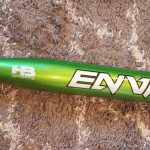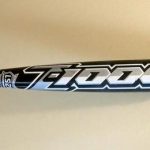*Note: products listed on Bases Loaded Softball are selected by our softball players, coaches, and team of enthusiast writers and editors. Buying softball products through our links may earn us a commission with no additional cost to you.
For first-time players who aren’t yet used to the game of softball, an Infield Fly is one of the most confusing calls to hear. Even for advanced players, it can be tricky to know exactly what to do when an Infield Fly is called.
Understanding this rule is a lot easier if you first understand the other rules of the game, as well as the normal strategies that are employed in softball. It will be more difficult to really understand the purpose of an Infield Fly if you don’t first know what a “double play” or “triple play” means when executed by the defensive team. It’s also important to understand when runners can take leads from their bases, when they need to “tag up”, and when they can be forced out.
If you’re not familiar with these concepts, read on to hopefully get a more full understanding, as some of them are explained throughout the course of this article. However, nothing substitutes for simply playing the game and getting used to the rules as you go along.
No matter what level of player you are, or how well you know the game, you will almost certainly ask the question “what is the infield fly rule?” at some point in your career. Read on to find out!
What is the Infield Fly rule in softball?
An “infield fly” refers to a fly ball—rather than a line drive or bunt—that is deemed by the umpire as a fair fly ball, which can be reasonably caught by any of the infield players, pitcher, or catcher. This rule applies specifically to when there are runners on the first and second bases, or the first, second, and third bases, and when there are less than two outs. These factors must all line up in order for the umpire to call an Infield Fly.
The interesting thing about this rule is that if the umpire calls an Infield Fly, the batter is automatically out, whether or not anyone actually catches the ball. As for the runners, they can treat the ball like any other hit. So, even if the umpire calls an Infield Fly, the runners can still try to advance bases. If the ball is caught and they are tagged, then they are out, as normal.
You will know that an Infield Fly is called when the umpire literally calls out “Infield Fly, batter is out” and typically raises one arm straight up into the air as a visual cue. If the umpire is unsure whether or not the ball will be fair or foul, they must declare “Infiled Fly, if fair!”
What is the purpose of the Infield Fly rule?
The infield fly rule was created back in 1895. The purpose of the rule is to prevent double or triple plays when a ball is popped upwards, high in the infield. To understand why this would make the game unfair, or too easy for the infield players, imagine a softball field where the bases are loaded. Then, imagine the ball is hit by the batter, and pops up into the air and comes down right where the third-base infield player is. This infield player could catch the ball easily, tag the runner on third, then stand on the base so that the runner on second cannot progress and is thus forced out. Then, the infield player on third could throw the ball to a player on second, similarly forcing out the runner who was standing on first. This is too easy of a double or triple play. However, if there is not at least a runner on first and second base, then infield players can only complete a play that forces one runner out, which is more fair that the double or triple plays described previously. This is why an Infield Fly can only be called by the umpire if there are runners on first and second base, or on first, second, and third base.
Why was the Infield Fly rule introduced?
If the Infield Fly rule was not introduced, it would result in a significant amount of double and triple plays. Imagine a ball is popped into the air and comes down near the defensive player on third base. The runners, seeing the ball’s trajectory, would stay close to their bases because they expect that the third base defensive player would catch the ball. However, the third base defensive player could just intentionally let the ball drop, then quickly pick it up, touch the third base, getting an out on the player who stayed close to second. Then, the defensive player on third base could throw the ball to a teammate on second base, who could then tag the base and get the player on first out, resulting in a double play.
In other words, without this rule, the defensive team would have a loophole that would allow them to make easy double and triple plays.
The reason the Infield Fly rule was introduced, in short, is to protect the offensive team from being forced out too easily and too often.
When can an Infield Fly be called?
And Infield Fly can only be called by the umpire, who has the complete authority to call the shots with this rule. If you do not hear the umpire call the Infield Fly, all players should continue gameplay as usual, assuming that there is no Infield Fly in place for that play.
There are, however, circumstances in which an umpire may not call the Infield Fly rule. Mainly, the rule cannot be called if the umpire does not think that the ball could be caught using “ordinary effort.”
Imagine, for example, that there were runners on first, second bases, and third bases. Then, the hitter does a pop fly, but popping it so that it is not anywhere near defensive players, so that it cannot be caught with “ordinary effort.” The runner on third may make a charge for home base at this point. The umpire in this case would see the ball and conclude that the ball couldn’t be caught using “ordinary effort,” and would not call an Infield Fly for that reason. In this scenario, the ball would likely be recovered from the ground by a defensive player and thrown to the third base defensive player, who would likely use the ball to touch third base to get the runner on second out.
An Infield Fly ball cannot be called if the batter hits a foul ball, or if the batter bunts.
What do runners do when an Infield Fly is called?
If you’re a runner on a base and you hear an Infield Fly called, stay close to your base. You don’t have to run on an Infield Fly if the ball drops. If the ball is not caught by any of the infield players and you think you can safely advance to the next base, then go for it! Just be quick on your feet and prepare to slide, as balls that are hit into the infield usually make for quick plays, and it can be easy to be tagged in this scenario. The best thing to do is keep your ears open, and listen to the advice of your coach, who has a good view of all the players and can normally make the best call.
If an Infield Fly is caught, and the runner was taking a lead off the base because they wern’t expecting the ball to be caught, the runners must first “tag up”—meaning they must re-touch the base they were running from—before progressing to the next base. A runner does not need to tag up if the ball is not caught, and instead hits the ground first. And since the batter is out, in this scenario, the force play on the runners is also no longer in effect.
What are some other important things to consider about an Infield Fly?
Despite the name of the call, an Inflied Fly ball does not actually need to be caught by an infield player. In fact, an Infield Fly ball doesn’t even need to be caught in the infield at all!
Another tricky thing about an Infield Fly ball is that the ball doesn’t actually need to be caught, either. If the umpire calls an Infield Fly ball, the batter is out, regardless of what happens after the call is made.
If an Infield Fly is called, but the ball ends up being a foul, then the call is off and the batter is not out. In this case, you would proceed as normal for a foul ball.
Here is a short video demonstrating possible situations of the Infield Fly Rule being called, with an example of a triple play resulting from this call:
What qualifies as “ordinary effort”?
When the umpire decides that the ball could be caught with “ordinary effort”—a necessary determination when making an Infield Fly call—they must take into consideration the league/age group they’re playing with. “Ordinary effort” can mean very different things when playing with a group of 9 – 11 year olds, compared to a game comprised of high school or collegiate players. Basically, it all comes down to the discretion of the umpire. But “ordinary effort” should always be defined game-by-game, based on the age and skill level of the players on the field.
What are the key elements to understanding the Infield Fly rule?
- For the umpire to call an Infield Fly, there must be less than two outs.
- In order for the Infield Fly rule to be called, there must be runners on either first and second bases, or first, second, and third bases. Any other scenario does not permit the calling of an Infield Fly.
- The umpire cannot call an Infield Fly if the ball is bunted, or on a line drive.
- The umpire can only call an Infield Fly if it’s determined that the ball can be caught by an infielder with “ordinary effort.” (Read the section above to see what qualifies as ordinary effort.)
What is an example of a play where the Infield Fly rule cannot be used?
Imagine a scenario in which there are runners on first and second bases. There are no outs yet. The batter steps up to the plate, and the defensive coach, seeing that the batter is left-handed, calls all the infielders and outfielders to move towards the side of second base that’s closest to first base. In this scenario, all of the defensive players are now far away from third base. Now, imagine the batter hits a low pop ball that will come down in the infield, close to the third base, where no defensive players are. In this scenario, none of the defensive players could possibly move fast enough to catch the ball. Therefore, the umpire could not assume the ball could be caught using “ordinary effort.” In this case, since the ball cannot be caught using ordinary effort (as determined by the umpire), an Infield Fly should not be called.









